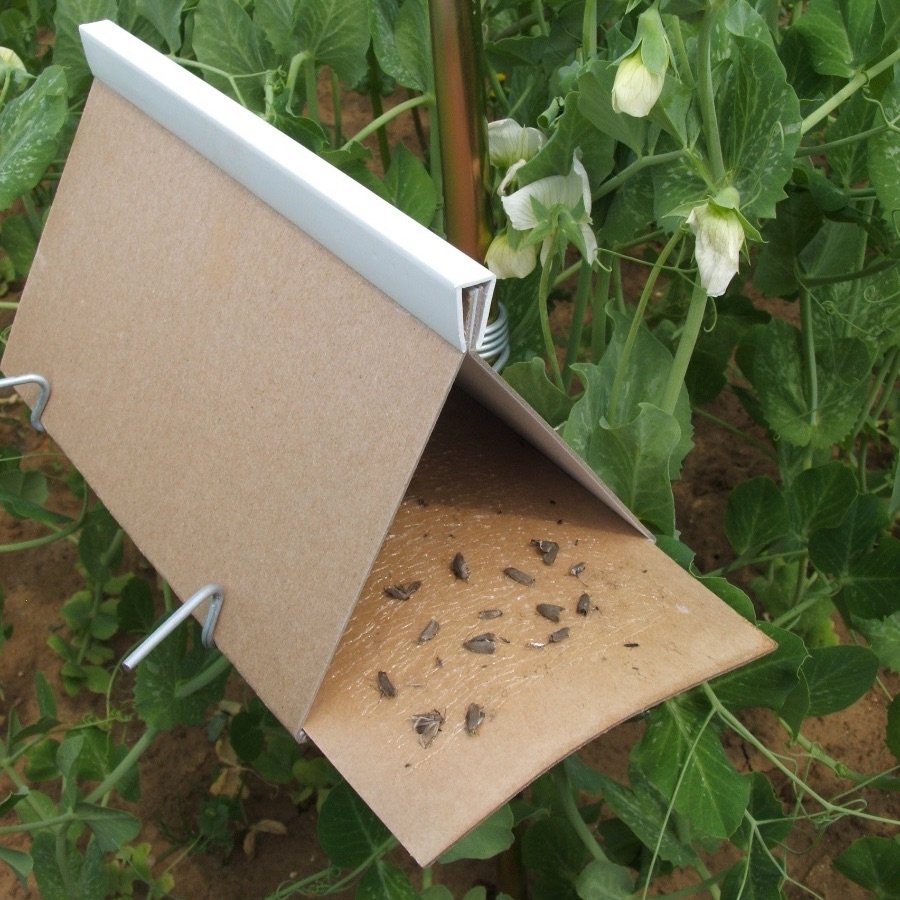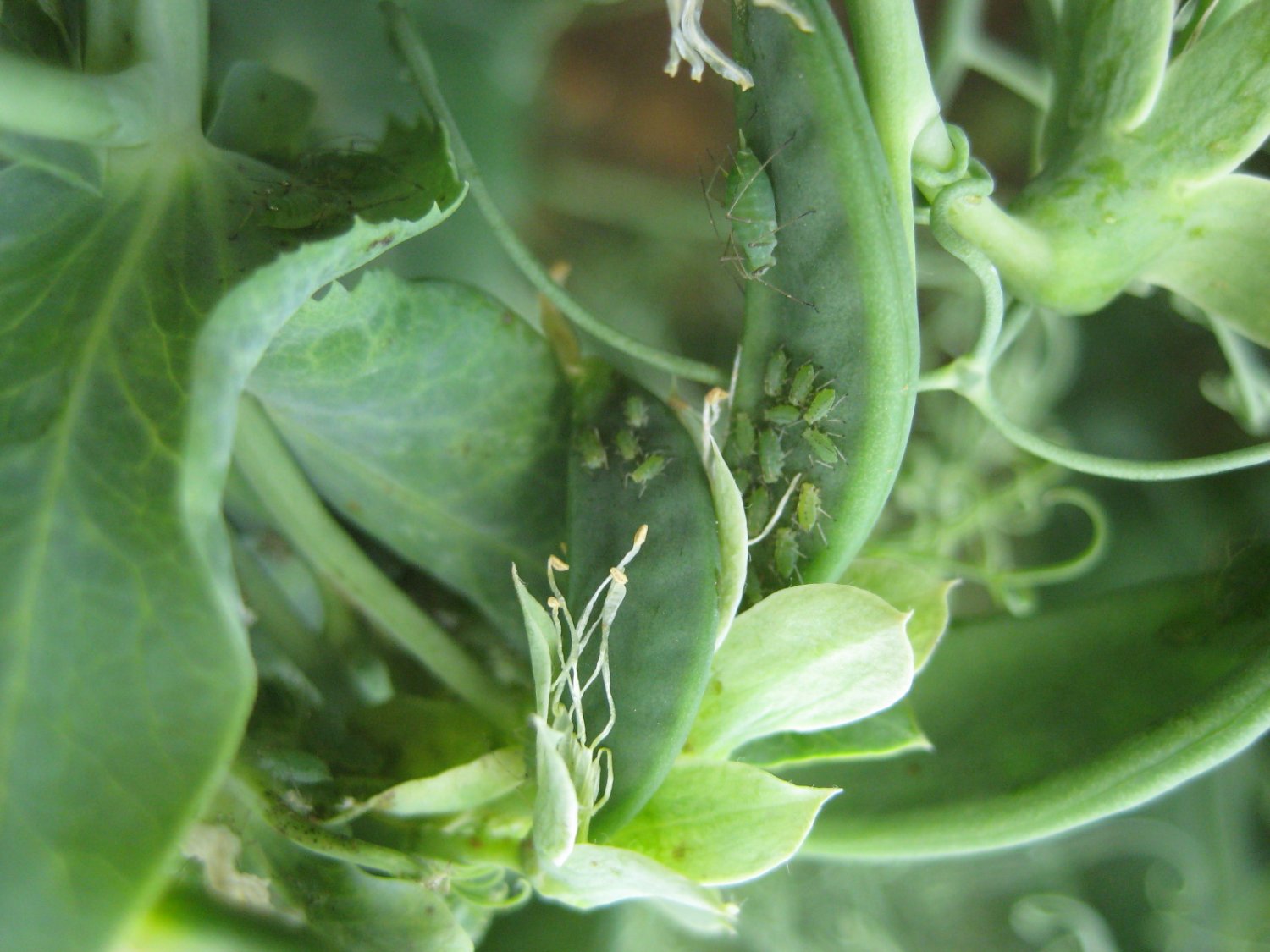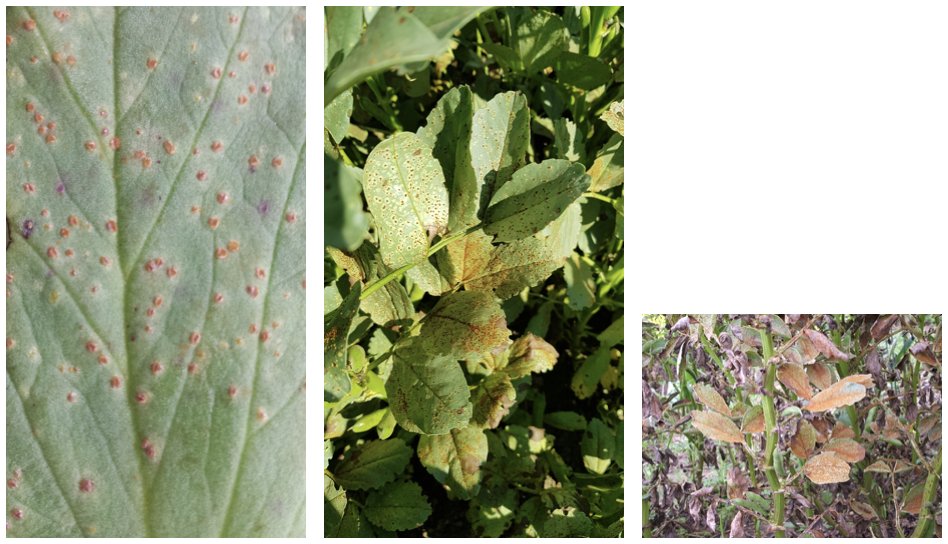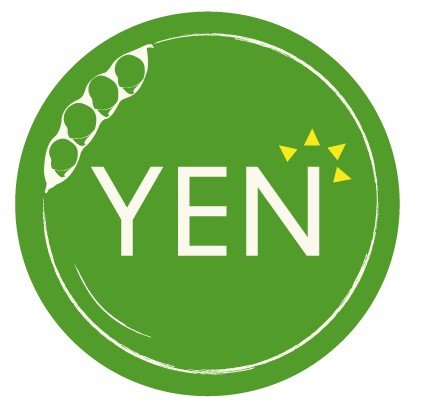PGRO Crop Update Number 4: 22nd May 2025
PGRO Crop Update: CB2504
Number 4: 22nd May 2025
Pea Moth
Pea moth thresholds may have been reached in some areas.
Traps should already be out in fields, but it is not too late to act.
Traps should be placed in the pea crop by the middle of May and examined at two-day intervals. The number of moths caught by each of them is noted on each occasion. Traps can be suspended on pheromone trap pole kits or fence posts in the field and should be placed at canopy height, moved upwards at intervals as the crop grows.

Dr Becky Howard explains the process here: https://youtu.be/uuS9ggywlpA, in her masterclass video.
Combining peas
The threshold, determining treatment is 10 or more moths caught in a trap on two consecutive occasions. Crops which are at the first pod set stage, or which have flowered should be sprayed on the predicted spray date. Later crops should only be sprayed when they reach first pod set. Crops with flat pods are susceptible to damage. A second application should be applied 10-14 days later.
A spray date can be obtained from the PGRO website - https://www.pgro.org/pea-moth/ based on a computer prediction, and the model predictions should be checked 3 - 4 days after reaching a threshold.
Vining peas
The acceptable level of damage is much lower in vining peas so the threshold used for combining peas is not suitable. Traps should only be used as a guide as to the presence of moths.
In areas where damage has been a problem in the past, crops which are at the first pod set stage should be treated with a single application. Take care to observe the minimum interval between application and harvest.
For products available to control pea moth please see our agronomy guide at www.pgro.org.
Order pea moth traps from the suppliers below:
One set of traps is required for a block of peas, i.e. a farm having all the pea fields within a restricted area need only purchase one set of traps, but in fields of 50 ha or more two sets are required.
Dragonfli, Unit 4 Rippers Court, Sible Hedingham, Halstead, Essex, CO9 3PY, UK
Tel: 01376 563322
www.dragonfli.co.uk
Andermatt UK, 47 Compton Road, Brighton, West Sussex, BN1 5AL, UK
Tel: 07939 395059
Email: contact@andermattuk.com
www.andermattuk.com
Koppert UK
https://www.koppert.com/challenges/caterpillars/pea-moth/
Aphids - peas:
Aphids are present in many pea crops. If control of viruses is required, then peas should be treated as soon as aphids are observed. The new pre-flowering product available for aphid management in peas and beans, Sivanto Prime, will give effective control of pea aphids.
The threshold for feeding damage during flowering in combining peas is reached when 20% of the pants are infected. In vining peas, the threshold is lower (15%).
More on pea pests: https://www.pgro.org/pests-and-diseases/

Diseases
Bean rust
With the warmer dry weather of recent weeks there is a risk that rust may continue to develop in bean crops. Both winter and spring beans are susceptible to infection and fungicide applications to control rust should be made when disease is observed in the crop. Rust infection in beans is encouraged by warm days and cool, humid nights.
The disease develops as small, circular, orange pustules on the lower leaves. These become larger and develop a pale-yellow halo around the lesions. Severe infections can result in defoliation and significant yield loss.
Protectant fungicides should be applied when disease is observed. A second spray should be applied 3-4 weeks later if rust continues to develop on the upper parts of the plant. A range of products and mixtures are approved.

Irrigation
Soil water deficit in any crop means that irrigation at the appropriate time will be of benefit. Although originating from relatively dry Mediterranean regions and the near east, peas are no exception. Faba beans are also highly dependent on moisture for optimum yield and performance. With increasing concern following record-breaking dry weather over recent weeks, irrigation may be worth considering.
The rooting depth of peas can be up to 80cm, and beans up to 100cm. This is influenced by soil structure and compaction which fundamentally affects access to available moisture. The effects of water stress can be minimised by ensuring peas and beans are drilled into well-structured soils that encourage optimal root development.
A restricted water supply reduces leaf size, stem extension and root development. It upsets plant water relations and reduces the efficiency of overall water use. At a cellular and whole plant level there are various physiological and biochemical responses. Stomata close and carbon dioxide assimilation is reduced because of decreased enzyme function. The associated production of reactive oxygen causes further damage to plant macromolecules, and this is one of the major factors that reduces plant development.
Plants have mechanisms to cope with a degree of water stress and crop growth stage and duration of the dry spell are important factors. Equally, crop development stage is a critical factor determining the most effective time to irrigate. Prolonged dry weather can ultimately cause excessive wilting and plant death.
Peas and beans are responsive to irrigation, but timing is crucial and should be related to both specific crop growth stages and soil water deficit. Soils may be near to field capacity when crops are sown, and irrigation applied before the start of flowering increases haulm weight but rarely increases yield. In several experiments irrigation during vegetative growth depressed pea yields, irrigation should not be carried out during this period unless the seedbed is very dry and adequate germination would not otherwise occur, or the crop is severely wilted because of drought.
Peas are most responsive to irrigation when the first flowers are opening. If a single application is to be made it should be at this stage. The plant is thought to be most responsive at this stage because the root system has ceased to grow, making the plant more vulnerable to a lack of water.
Yield increases from irrigation at this time are often very substantial and can be up to 50% as more peas per pod are formed. Haulm weight also increases.
Irrigation of peas at petal fall may increase the likelihood of Botrytis and Sclerotinia infection in the damp, moribund petals.
Pea crops irrigated during pod fill have shown considerable increases in yield. The number of peas per pod and the mean weight of peas are increased by irrigating at this time. The weight of the haulm is not affected.
Irrigation of winter beans can lead to increased levels of chocolate spot and lodging and is rarely necessary due to deeper root establishment. In spring beans, irrigation at flowering and pod fill can also lead to very significant yield increases.
It should be remembered that irrigation may both encourage and help in the fight against disease. For example, a wet environment can promote the development of Botrytis cinerea in peas, but a more vigorous, less stressed crop is generally able to defend itself against pathogens more effectively.
PGRO technical information
All PGRO Agronomy information has been revised to include the changes in pesticide availability for peas and beans. PGRO publications are available as free downloads from the PGRO web site www.pgro.org User passwords are available on request through the web site.
The PGRO App "Crop Monitor" is free to access and use and can be downloaded from both Google Play and I-tunes stores.
For any information about crop management please contact PGRO at 01780 782585 or becky@pgro.org.
Pea and Bean Yield Enhancement Networks (YEN)
YEN membership is open, and available to anyone including farmers, agronomists, and researchers.
These are not competitions. Each crop starts with a different potential and the YEN intensively monitors the crops and evaluates the relative achievement of each crops potential. Benchmarking against crops in each year and across years indicates factors strongly associated with yield, and by comparing different approaches gives growers clear indications of what they can do to optimise their own potential in the future. As the data set grows this approach will become an ever more powerful tool for growers. Open to all crops ( the good the bad and the ugly), there really is nothing to lose and a huge amount to gain and PGRO will support you through the process. There is a lot to be learned from participation!
No matter what the crop conditions this programme offers great learning opportunities for future cropping improvement.
Sponsorship is available on a first come, first serve basis for the 2025 Harvest.
(enquire via email at peayen@adas.co.uk for more information or call PGRO).
The link for registration is https://yen.adas.co.uk/networks-projects

The information in this publication must not be reproduced without the express written permission from the PGRO.
Information disseminated by the Processors & Growers Research Organisation is given after the exercise of all possible care in compilation, preparation and issue, but is provided without liability in its application or use.



